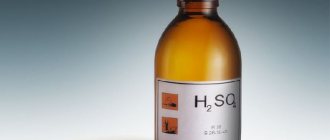Alcohols, lesson 10th grade - presentation
Completed by: 10th grade student Sakhabutdinova T. Checked by: chemistry teacher Barlukova V.V.
Alcohols. Composition, structure of alcohols. Alcohols are hydrocarbon derivatives containing one or more hydroxyl (OH) groups. The general formula of alcohols is C n H 2n+1 -OH OH is a functional group that determines the chemical properties of alcohols.
Classification of alcohols. 1. According to the structure of the hydrocarbon radical. 2. By the number of hydroxyl groups. 3. By the nature of the carbon atom.
Classification of alcohols according to the structure of the hydrocarbon radical. Saturated CH 3 -CH 2 -CH 2 -OH Propanol Unsaturated CH 2 =CH-CH 2 -OH Propen-2-ol-1 Aromatic CH 2 -OH phenylmethanol
Classification of alcohols according to the number of hydroxyl groups. Monohydric CH 3 -OH methanol Diatomic HO-CH 2 -CH 2 -OH Ethanediol-1,2 Polyatomic CH 2 -CH-CH 2 OH – OH –OH Propanetriol-1,2,3
Classification of alcohols according to the nature of the carbon atom. Primary CH 3 -CH 2 -CH 2 -OH propanol Secondary CH 3 -CH 2 - CH 3 OH propanol-2 Tertiary CH 3 CH 3 -C-OH OH 2-methylpropanl-2
Isomerism 1. Carbon skeleton CH 3 CH 3 -CH-CH 2 -OH CH 3 -C-OH CH 3 CH 3 2-methylpropanol-1 2-methylpropanol-2 2. Positions of the hydroxyl group CH 3 -CH 2 -CH 2 - OH CH 3 -CH-CH 3 propanol-2 propanol-1 OH 3. Interclass isomerism with ethers CH 3 -CH 2 -OH ethyl alcohol
Physical properties Alcohols containing from 1 to 10 carbon atoms are liquids; more than 11 are solids. Alcohols are more soluble in water than limiting hydrocarbons; with increasing molecular weight, the solubility of alcohols decreases and the boiling point increases, and density increases. Alcohols have a lower density than water.
Chemical properties 1. Interaction with alkali metals C 2 H 5 OH+2Na= C 2 H 5 ONa+H 2 2. Interaction with hydrogen halides C 2 H 5 OH+HBr C 2 H 5 Br+H 2 O 3. Intermolecular dehydration C 2 H 5 OH+HOC 2 H 5 (C 2 H 5 ) 2 O+H 2 O Diethyl ether is formed 4. Removal of hydrogen (dehydrogenation)
Methods of production 1. Hydration of alkenes CH 2 = CH 2 + H 2 O CH 3 -CH 2 -OH 2 2. Specific a) Methanol - from synthesis gas CO + 2H 2 CH 3 OH b) ethanol - fermentation C 6 H 12 O 6 2C 2 H 5 OH + 2CO 2
Use of ethyl alcohol In medicine, ethyl alcohol is primarily used as an antiseptic. The tanning properties of 96% ethyl alcohol are used to treat the surgical field or in some techniques for treating the surgeon's hands. Alcohol can also be used for burns. Evaporating quickly, it will cool the surface, reduce pain, and most importantly, prevent the formation of blisters. Alcohol is an excellent antipyretic. When rubbing the body, ethanol will quickly evaporate and reduce the temperature of the skin and the body as a whole. Ethanol causes blood vessels to dilate. Increased blood flow leads to redness of the skin and a feeling of warmth.
A qualitative reaction to polyhydric alcohols is their interaction with a freshly obtained precipitate of copper(II) hydroxide, which dissolves to form a bright blue solution.
The impact of ethyl alcohol on the human body. In large quantities, ethanol inhibits brain activity (inhibition stage) and causes impaired coordination of movements. An intermediate product of ethanol oxidation in the body, acetaldehyde, is extremely toxic and causes severe poisoning. Systematic consumption of ethyl alcohol and alcoholic beverages containing it leads to a persistent decrease in brain productivity, death of liver cells and their replacement with connective tissue - liver cirrhosis.
Thank you for your attention!
Summary of a chemistry lesson in 10th grade. Topic: “Alcohols. Limit monohydric alcohols".
4. Why, among hydrocarbons, the first members of the homologous series are gases, and methanol (the first representative of the homologous series of saturated monohydric alcohols) is a liquid?
5. What explains the solubility of alcohols in water?
6. Where is ethyl alcohol used, and what effect does it have on the body (look on the back)?
II . Write a text explaining the material to your group members.
III . Share the results of your work with your group members.
IV . Offer your group members questions to check the level of assimilation of the material you presented.
The effect of ethyl alcohol on the human body. The use of ethyl alcohol.
Ethyl alcohol has a pronounced and very rapid narcotic
impact. Instantly penetrating through the mucous tissues of the mouth into the blood and further into the brain tissue, alcohol causes a feeling of warmth (blood vessels dilate, blood pressure decreases) and calm, joy, relieves inhibition and control over speech.
Some people feel sleepy from drinking alcohol. Others, on the contrary, become bold and begin to go on a rampage.
The narcotic effect of ethyl alcohol is explained by blocking the nerve centers responsible for human behavior and saturating the blood with carbon dioxide, creating a feeling of satiety and well-being.
When the blood alcohol content is 0.1% (0.1 g of alcohol per 100 ml of blood), a person can no
drive a car
. At 0.25% alcohol in the blood, a person loses coordination of movements; at 0.35%, a complete loss of sensation occurs. Previously, before the use of anesthesia (before the surgeon Pirogov), people undergoing surgery were given alcohol until they completely lost sensitivity. But this condition is extremely dangerous, because... at the same time, the functioning of the heart and other organs sharply deteriorates. In addition, one could easily cross the threshold of 0.40% alcohol content, at which a person dies.
The degree of alcohol dependence is very individual. The effect of alcohol on a young body is especially dangerous
Drinking alcohol is even more dangerous
for women who are expecting a child
(children are born with mental disorders and physical deformities) and
who are breastfeeding.
Statistics show that
a child will almost certainly become an alcoholic in the future.
Alcohol addiction is inherited. States and nations that abuse alcohol degrade.
Alcohol destroys the entire body, but especially nerve cells and the liver.
Recovery from alcoholism is no less painful than recovery from other drugs. Women cannot be cured of alcoholism.
A person cured of alcoholism should not drink even a small glass of wine, otherwise the disease will return. Alcohol addiction affects people, both with a strong psyche and with a weak one, but only those who strongly desire to be cured and get rid of this habit are cured. All those who have recovered from alcoholism claim that the perception of the world without alcohol is much brighter than under its influence. In addition, counterfeit alcohol poses a huge danger. Taking methyl alcohol instead of ethyl alcohol leads to death!
Alcohols, video
And finally, an educational video on the topic of our article.
Author: Pavel Chaika, editor-in-chief of Poznavaika magazine
When writing the article, I tried to make it as interesting, useful and high-quality as possible. I would be grateful for any feedback and constructive criticism in the form of comments on the article. You can also write your wish/question/suggestion to my email [email protected] or Facebook, with respect, the author.
Author page
Chemical properties of alcohols
The properties of organic substances are determined by their composition and structure. Alcohols confirm the general rule. Their molecules include hydrocarbon and hydroxyl groups, so the chemical properties of alcohols are determined by the interaction of these groups with each other.
The properties characteristic of this class of compounds are due to the presence of a hydroxyl group.
- Interaction of alcohols with alkali and alkaline earth metals. To identify the effect of a hydrocarbon radical on a hydroxyl group, it is necessary to compare the properties of a substance containing a hydroxyl group and a hydrocarbon radical, on the one hand, and a substance containing a hydroxyl group and not containing a hydrocarbon radical, on the other. Such substances can be, for example, ethanol (or other alcohol) and water. The hydrogen of the hydroxyl group of alcohol molecules and water molecules is capable of being reduced by alkali and alkaline earth metals (replaced by them)
- Interaction of alcohols with hydrogen halides. Substitution of a hydroxyl group with a halogen leads to the formation of haloalkanes. For example: This reaction is reversible.
- Intermolecular dehydration of alcohols - the splitting of a water molecule from two molecules of alcohols when heated in the presence of water-removing agents: As a result of the intermolecular dehydration of alcohols, ethers are formed. Thus, when ethyl alcohol is heated with sulfuric acid to a temperature of 100 to 140 ° C, diethyl (sulfur) ether is formed .
- The interaction of alcohols with organic and inorganic acids to form esters (esterification reaction) The esterification reaction is catalyzed by strong inorganic acids. For example, when ethyl alcohol and acetic acid react, ethyl acetate is formed:
- Intramolecular dehydration of alcohols occurs when alcohols are heated in the presence of water-removing agents to a higher temperature than the temperature of intermolecular dehydration. As a result, alkenes are formed. This reaction is due to the presence of a hydrogen atom and a hydroxyl group at adjacent carbon atoms. An example is the reaction of producing ethene (ethylene) by heating ethanol above 140°C in the presence of concentrated sulfuric acid:
- The oxidation of alcohols is usually carried out with strong oxidizing agents, for example, potassium dichromate or potassium permanganate in an acidic environment. In this case, the action of the oxidizing agent is directed to the carbon atom that is already bonded to the hydroxyl group. Depending on the nature of the alcohol and the reaction conditions, various products can be formed. Thus, primary alcohols are oxidized first into aldehydes and then into carboxylic acids: When secondary alcohols are oxidized, ketones are formed: Tertiary alcohols are quite resistant to oxidation. However, under harsh conditions (strong oxidizing agent, high temperature), oxidation of tertiary alcohols is possible, which occurs with the rupture of carbon-carbon bonds closest to the hydroxyl group.
- Dehydrogenation of alcohols. When alcohol vapor is passed at 200-300 °C over a metal catalyst, such as copper, silver or platinum, primary alcohols are converted into aldehydes, and secondary alcohols into ketones:
- Qualitative reaction to polyhydric alcohols. The presence of several hydroxyl groups in the alcohol molecule at the same time determines the specific properties of polyhydric alcohols, which are capable of forming bright blue complex compounds soluble in water when interacting with a freshly obtained precipitate of copper (II) hydroxide. For ethylene glycol we can write: Monohydric alcohols are not able to enter into this reaction. Therefore, it is a qualitative reaction to polyhydric alcohols.
Definition
Alcohols are derivatives of hydrocarbons in the molecules of which one or more hydrogen atoms are replaced by a hydroxo group OH .
If the hydrocarbon radical is designated by the letter R , then in general the formula of the alcohol molecule can be depicted as follows:
For a carbon atom that is connected to a hydroxo group, all bonds must be simple:
Compounds in which the hydroxo group is located next to the double bond are unstable:
Based on the structure of the hydrocarbon radical, alcohols are divided into:
- limit
in a hydrocarbon radical, all bonds are simple;
- unlimited
in a hydrocarbon radical, there is a multiple bond;
- aromatic
there is a benzene ring, i.e. there is an aromatic bond in the hydrocarbon radical.
Based on the number of hydroxyl groups, alcohols are divided into:
- monatomic
the molecule contains one hydroxo group OH;
- polyatomic
the molecules contain two or more (many) hydroxo groups.
Let's consider the structure of molecules and properties of saturated monohydric alcohols.






